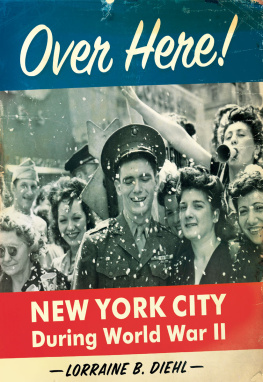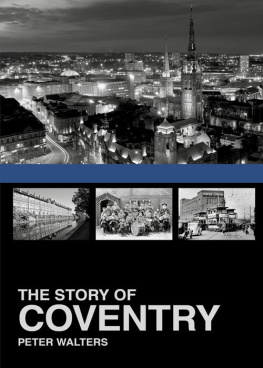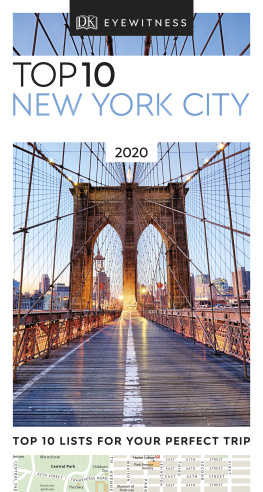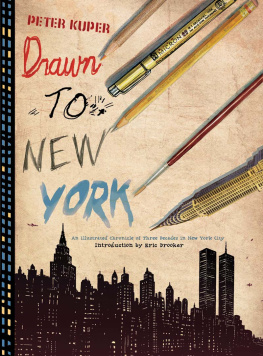It was a single image that drew me into the story of New York City during World War II. A newspaper account contrasting the building used for the 1945 espionage thriller The House on 92nd Street with the actual storefront in Yorkville intrigued me. That storefront, with its disturbing displays, was what got my attention. In the early 1930s, one could stop by 309 East 92nd Street and pick up a swastika banner or two, some pamphlets heralding Adolf Hitler as the savior of the Aryan Nation, and all manner of anti-Semitic tracts. There was information on a camp on Long Island and one in New Jersey where German-American children were being indoctrinated into an American version of Hitler Youth. But then, just a crosstown bus away, one would be delivered onto the streets of the Upper West Side where newly arrived German Jews, with the startling optimism of the New York skyline still in their heads, were settling in.
Pearl Harbor changed everything and like Americans across the country, New Yorkers rose to the occasion, enlisting, volunteering, and sacrificing for the war effort. But there is much more to the story of New York City during World War II. Because Englands ability to defend itself against Germany depended on fuel and supplies loaded on ships leaving New York Harbor, German U-boats came to call, so deadly at times that area beaches were closed and lights facing the ocean were extinguished. Just as the U-boat menace subsided, fear of an attack by air kept the citys skyscrapers in darkness. Manhattan Island was a very real target for Hitler, who pinpointed spots he wanted bombed. As threats from sea and air kept everyone vigilant, New Yorkers were also acting as hosts to American servicemen and women who were enjoying a few days leave, as well as to those soldiers and sailors from Allied countries whose ships were in port. Times Square, with its nightclubs and Broadway shows and the celebrity-filled Stage Door Canteen, became the great release valve. In many New York homes, there was an extra place at the Thanksgiving table for servicemen away from home.
It was in New York City that the atomic bomb, code-named the Manhattan Project, was born. It was also here, in a modest office in Rockefeller Center, that a Canadian millionaire, working for the British Secret Service, oversaw a vast network of spies. Pier 88 at West 49th Street was where the SS Normandie caught fire and burned, sparking rumors of sabotage. Although that rumor proved false, four German spies did come ashore on a Long Island beach one foggy night in June of 1942, with instructions to bomb, among other targets, the Hell Gate Bridge and Newarks Pennsylvania Station.
Fortunately, New York was spared the saboteurs deadly plans, and except for the occasional blackout, rationed food, and little gas in the tank, New Yorkers had few obstacles to keep them from doing their part for the war effort. Because New York City was not harmed by the war, most New Yorkers living through those emotional times have warm memories of a city pulling together at a very sober time. Sobriety was not a priority on V-J Day, however, when every stoop on every block became the scene of an instant party. Times Square gathered the rest of the city in celebration as its great neon signs, unrestricted by the dim-out, blazed through the night.
Nowhere was the wars end more dramatic than along the citys waterfront, where almost daily, welcoming crowds lined up to watch the great ocean liners filled with returning troops steam through the Narrows into the citys famous harbor. Jack Wayman, who arrived on the Queen Mary , remembers it well: To come up that river and see the Statue of Liberty, to dock and have crowds of people running to greet youthat was thrilling.
The end of the war changed the city. It loosened the umbilical cord that tied neighborhoods to the old country, making way for the new international city as defined by the complex of buildings rising on the East River. The United Nations would set the tone. Sleek glass boxes began to rise along Manhattans commercial avenues, catching the face of the sun as they loomed over older brick wedding cake buildings. Pre-war was a new term, defining that Mason-Dixon line in architecture. As for those old neighborhoods, many would change or disappear as returning veterans with the ink hardly dry on their GI loans left the city for the new suburbs. The storefront on 92nd Street was still there, but the days when it sold the paraphernalia of the death machine that took out six million were now a dark footnote to the citys past. Most New Yorkers needed to tuck that history away for a while and look toward the future. A new decade was just four short years away after all, and New Yorkers were anxious to embrace it.
World War II ended sixty-five years ago and yet its lessons still resonate. Once again we are asked to ration our resources, not to fuel a world war but to keep our exhausted planet from depletion. Sacrifice is a noble notion again as we look out over the debris field of our past indulgences. The cost of those indulgencesto our souls as well as the planet that sustains ushas been high, and it should humble us all to realize how small our sacrifice is when placed against a generation that was called upon to give up so much more than gas for their cars and choice cuts of meat for their tables. The Americans who emerged from World War II cherished the fruits of their shared sacrifice because always in their minds there was an image of the terrible world they might have inherited. We already have that hindsight. All we need do is follow their example.
SHADOWS OVER MANHATTAN
New York City on the Eve of War

THE AMERICAN VERSION of Hitler Youth enjoying their moment in the sun at Camp Siegfried. The 44-acre Little Germany in Yaphank, Long Island was blatantly spawning a mini-Aryan nation.
National Museum of American Jewish History, courtesy of the USHMM Photo Archives.
Nazis Among Us
In a year, perhaps less than a year, they will all be taking orders from us.
Conrad Veidt as Franz Ebbing
All Through the Night
Warner Bros., 1942
The scene was the cellar of a seedy saloon on Second Avenue in the Yorkville section of Manhattan. The time, late evening in early February 1934. Sometime in January, a tenant in the building where the saloon operated dropped a line to Representative Samuel Dicksteins office in Washington, D.C., informing him that he had seen uniformed men with swastikas on their arm-bands enter the saloon and then disappear. Richard Rollins, who was working unofficially for Dicksteins subcommittee investigating Nazi propaganda in this country, contacted the buildings landlord asking to be informed the next time these men appeared. Now, the phone call Rollins had been waiting for came through. Within minutes, Rollins joined the landlord and together they descended the steps into the cellar. The first thing Rollins noticed was a cement wall separating the boiler room from a second, smaller room. Placing his hands over the wall, Rollins discovered that the mortar sealing the cement blocks was slightly damp. He got down on his knees and began scooping some of it out, eventually managing to pull away a few of the concrete blocks. Then he waited.
At 10:00 P.M . the sound of boot steps could be heard, and then an overhead light bulb was turned on in the room. Rollins described what he saw in the glaring light:
The room, about fifteen feet by twenty, was a detailed reproduction of a Berlin Storm Troop cellarI counted twenty-two uniformed men. Brown shirts, breeches, boots, Sam Browne belts with pistol holsters. Their Troop Fuehrer faced them. He lifted his arm half-way, elbow close to his side, palm out and clipped Heil Hitler!








